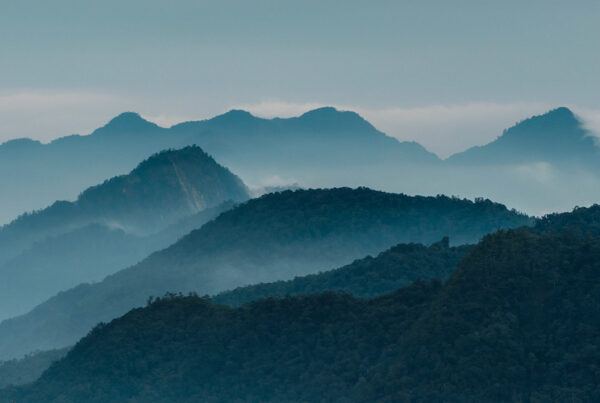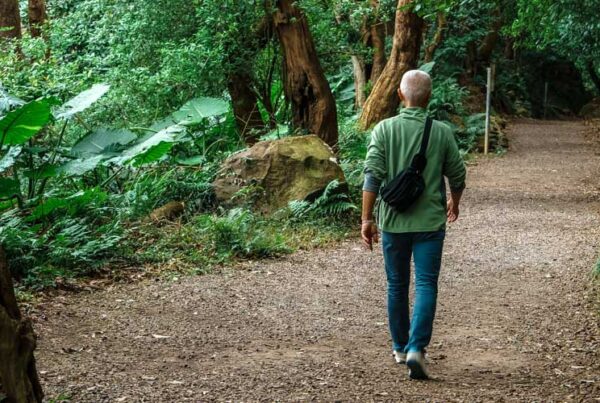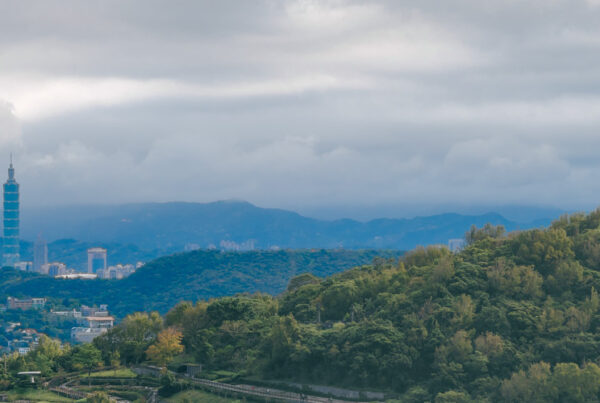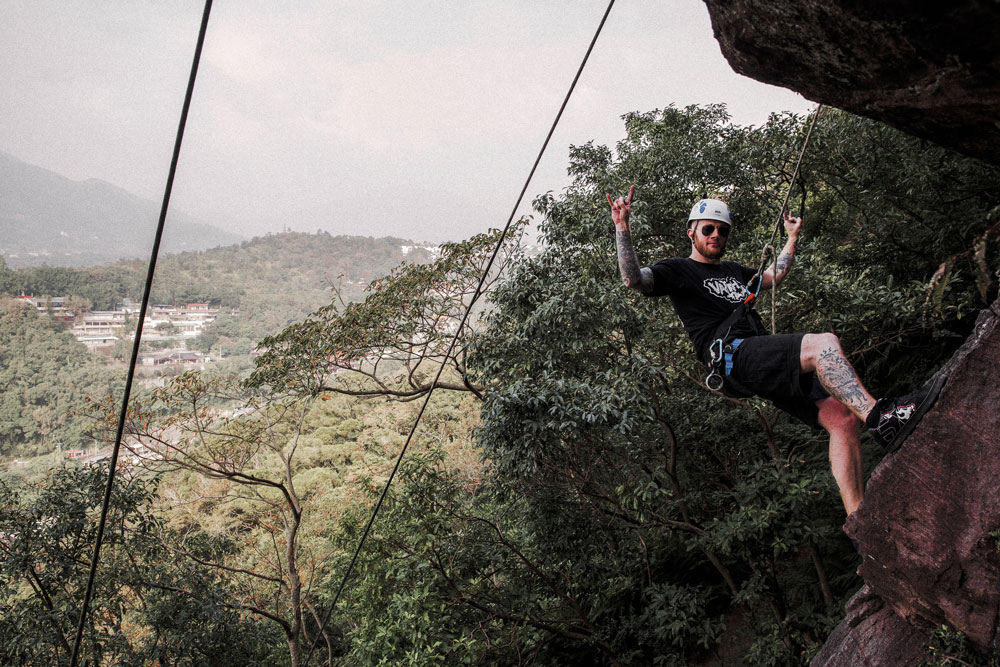
Enjoying Beitou Rock-ClimbingDespite its many mountains, Taiwan has only a few sites suitable for rock climbing. Surprisingly then, one of those sites is within the city limits of the capital, within walking distance from a metro station. The Rehai Cliff in Beitou District is not only conveniently reached but also a great place for your first rock-climbing experience, as you will find out in this article. Let’s go Beitou Rock-Climbing!
Text: Joe Henley, Photos: Maggie Song
I‘m clinging to a high-angle andesite face on the side of Mt. Danfeng. A cool winter breeze bends the branches of a shrub clinging, it seems, as precariously as I to the cold, unforgiving rock. My fingers are dug into a horizontal crevice. Below, I edge my feet along the side of a thin slab jutting out no more than a few centimeters from the alternating red and black bands of stone. One false move and I’ll … fall harmlessly backward into my harness and dangle sheepishly from my secured rope for a few moments, grinning in embarrassment at my instructor, who is belaying me from below. Then, perhaps, I’ll even descend the few meters to the mountain path below for a breather. This isn’t a scene from the films Cliffhanger or Vertical Limit. This is a beginner’s rock-climbing class in Beitou, a partly mountainous district in the northern part of Taipei City.
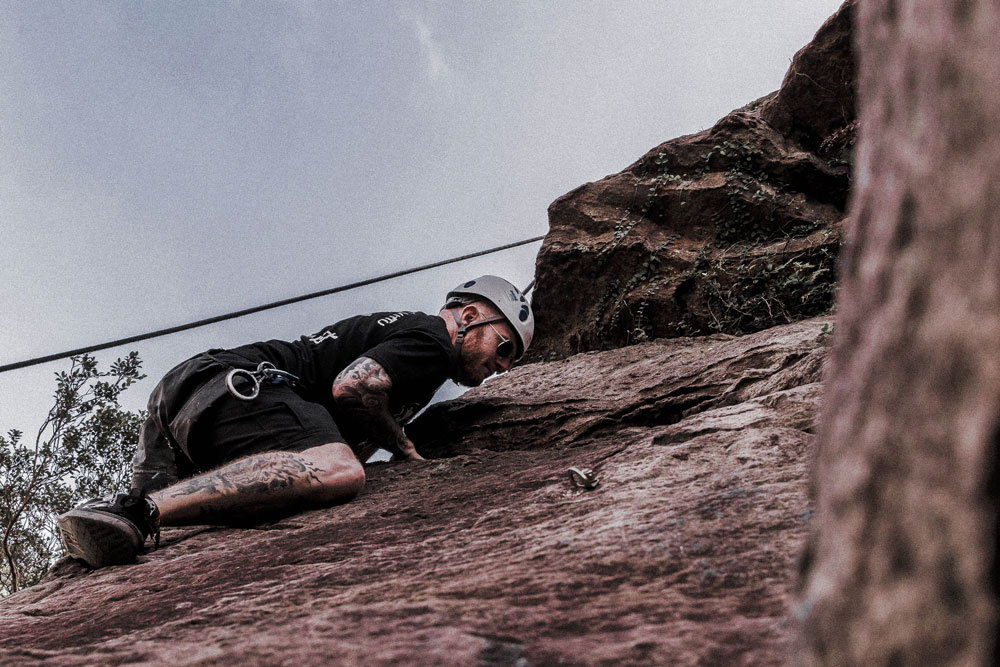
Facing the rock face
Though the main island of Taiwan is covered to the tune of approximately 70 percent by mountains, and has over 260 peaks rising above the 3,000-meter mark, there are only a handful of places in the country where one can partake of the sport of rock climbing. Premier among those few sites is Longdong, or the Dragon’s Cave, located on the Northeast Coast. There, climbers can pick and choose from dozens of routes on rough sandstone faces that are ideal for the all-important maintenance of a firm grip. At Longdong, climbers, from beginners to experts, simultaneously enjoy the thrill of adventure and a tremendous view of the East China Sea.
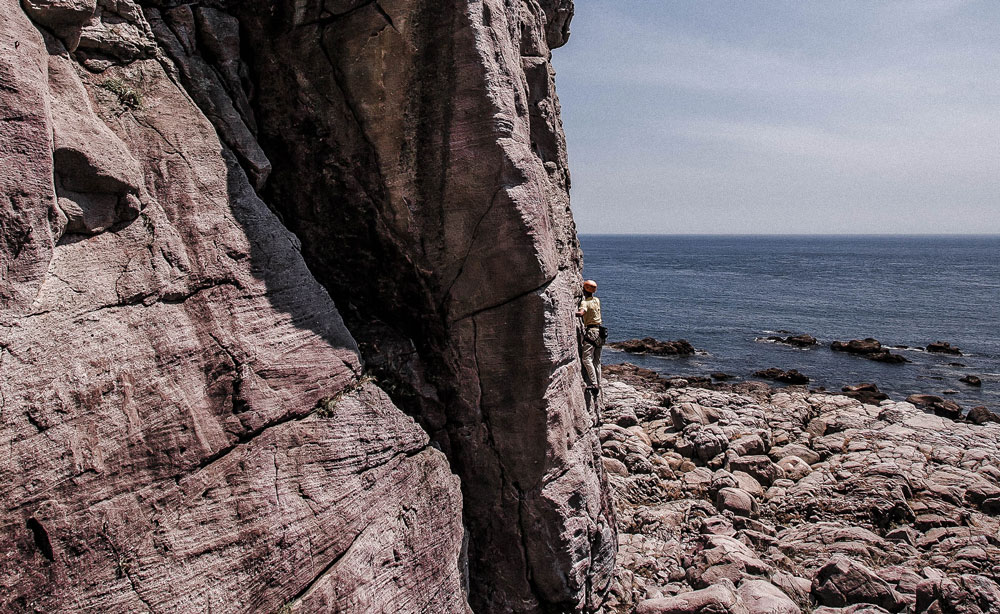
Rock-climbing at Longdong on Taiwan’s Northeast Coast
In southern Taiwan, climbers favor Guanziling in the northeastern corner of Tainan, though reviews of the rock walls there, not far from beautiful Biyun Temple, are mixed. And in Kaohsiung there are limestone walls near Qianguang Temple on Shoushan (Mt. Shou), a well-known tourist destination. There, climbers will find varied terrain offering overhangs, pockets, cone pillars, and underclings. (For the uninitiated, an undercling is “a handhold facing down the rock face, gripped with the palm of the hand upwards.”)
In the north, for those who don’t wish to venture beyond the confines of Taipei City, the place to go for climbers is Beitou’s Rehai Cliff. The site can be reached by walking up Zhongshan Road from MRT Xinbeitou Station. After passing the Spa Spring Resort, turn left onto Wenquan Road and then follow Wenquan Road’s Yinguang Lane up along the forested slopes of Mt. Danfeng. Look out for a lane-side fish-eye mirror on the right at an acute switchback. Just behind the mirror is an unmarked trailhead, the start of the Rehai trail. Follow the trail up until you come to the various andesite faces that emerge from the dense forest along the trail, with bolts for rope leads already set in place.
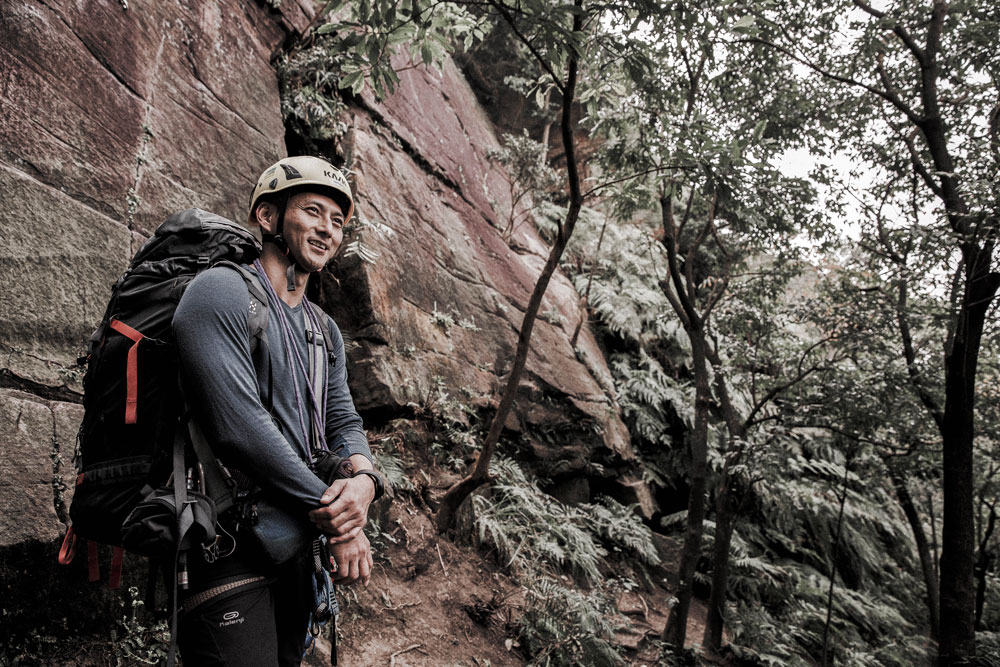
Shark Sha of Shawa Canyoning
Rehai offers the only chance for outdoor lead climbing, using ropes fixed from bolts in the rock face, in Taipei City. But according to Shark Sha of Shawa Canyoning (a Taipei-based rock climbing and river tracing outfit), who takes climbers of varying skill levels, from beginners on up, to Rehai several times a month, the place remains relatively undisturbed. At the trailhead, he grins wryly as he says, “Generally, normal people don’t come here.”

On the path to the Rehai Cliff
Indeed, on this early January day (the site is climbable year-round, on days when it doesn’t rain), three climbers and Sha as our instructor are the only people traversing the vertical inclines. The view, from an elevation of approximately 500 meters, spans the valley below and north all the way to the port town of Tamsui.
Sha takes me and my accompanying friends to a wall suitable for beginners – a face that starts out easy, with a gradual incline rife with natural foot- and handholds, before it levels out above, nearing a point where it becomes sheer. Sha first acquaints us with our helmets and harnesses, before scrambling up a path beside the face leading to a cliff above. From there he affixes our ropes to the bolts, doing so with speed and expertise acquired over his ten years of climbing and river tracing throughout Taiwan. The 39-year-old then explains the basics of belaying – one climber below keeping the rope taut for the climber above in case that climber slips or loses his or her grip, ensuring that he or she doesn’t fall, then gradually letting the rope out as the climber descends.
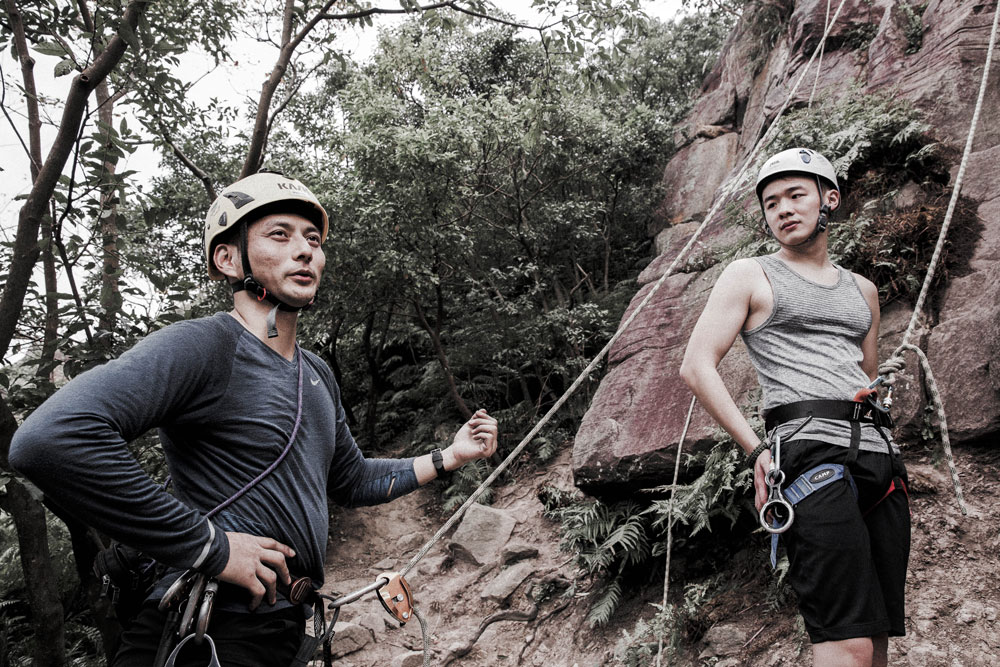
Receiving instructions before the climb
With the basic tutorial over, it’s then learn-as-you-go. Sha watches from below as we, in turns, venture somewhat tentatively up the face, with him belaying each climber. As we try to figure out what movements will be required further up, Sha provides us with tips on technique, using a green-laser pointer whenever we seem stuck to show where the next grasping point might be.
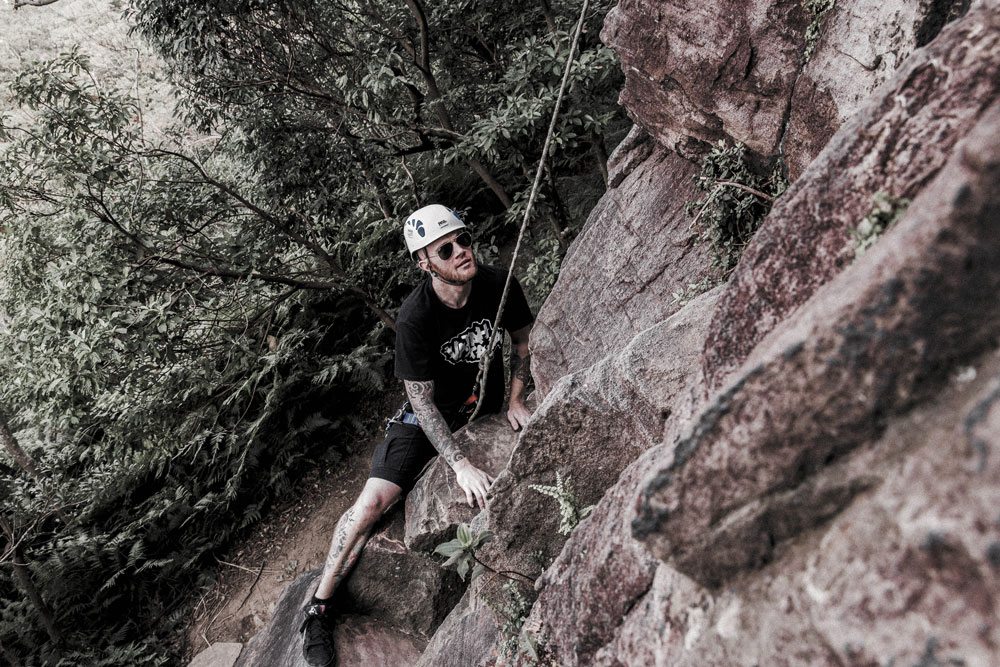
Starting the climb
Climbing one at a time, we learn from each others’ mistakes, at times from our deliberate or inadvertent triumphs. All three of us, with no prior climbing experience, successfully best the beginner’s slab. Our confidence bolstered, we move on to another section, which features a small overhang. To successfully navigate the formation involves a maneuver comprised of bracing the left forearm in a crimp above the overhang, pushing out from the face with the right foot while lifting the left quickly up and over the jutting rock, then pushing upward to the next level. Only two of us attempt it. One of us makes it. The other, sadly, is me. Try as I might, and in spite of Sha’s expert instruction, my arms and legs are soon spent.
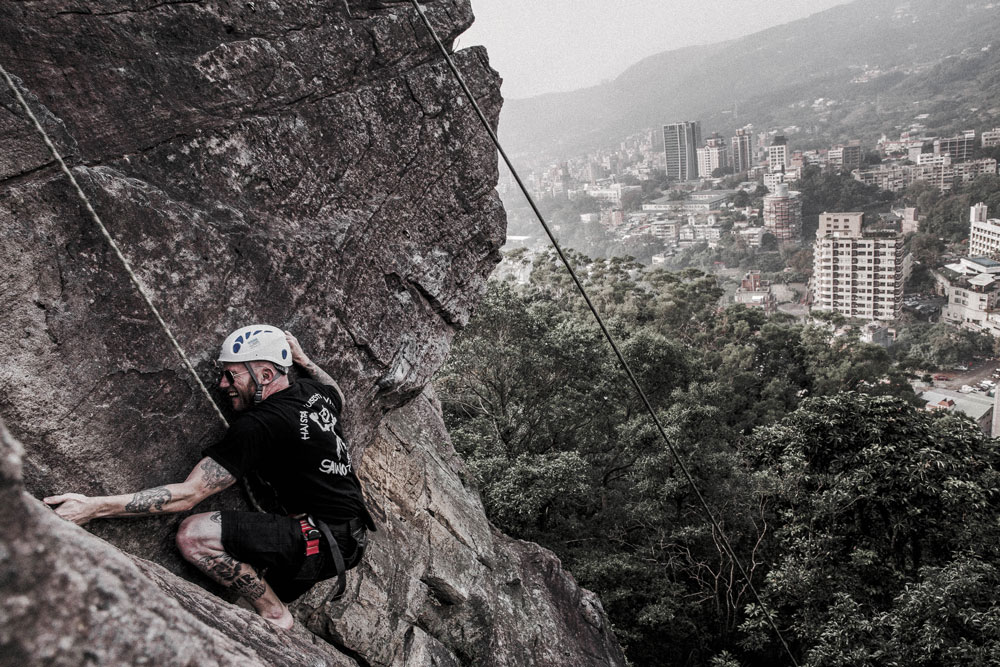
Reaching the limits
Briefly, in the depths of my disillusion, I consider making a better-late-than-never New Year’s resolution to work on my core strength. Still, in spite of my failure, the trying itself – the challenge of it – and even the sense of danger, though it is a completely safe experience thanks to the ropes, have made this an exhilarating outing thus far.
We’re not done yet, however. Our beginner’s class also involves abseiling from the side of a sheer face just beside those which we’ve practiced our nascent climbing skills upon. We follow a path up to the cliff from which Sha had previously affixed our ropes. At the top, we enjoy the panoramic view of the city and the surrounding mountains for a while as Sha prepares our ropes and other equipment for the descent. Then he explains the technique for letting out the rope gradually as we make our way down, approximately 25 meters, to the path below.
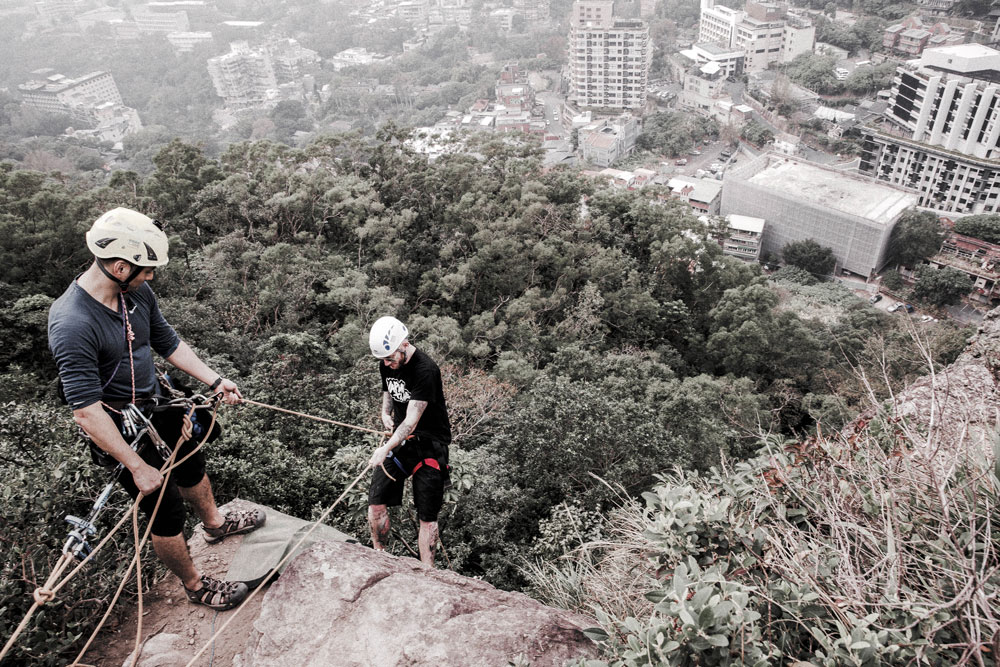
Learning how to abseil
Those squeamish about heights might find the next bit slightly disconcerting, as it involves leaning back over the cliff edge, putting your trust entirely in your rope, the person belaying you from above and, most frighteningly in my case, yourself. All those fears are chased away by a rush of adrenaline once those first small steps are made, however. From there on, it’s a jolt of pure excitement – the thrill of conquering a primordial fear.
Shawa Canyoning offers a variety of climbing and river-tracing excursion options for climbers and tracers of all skill levels, within Taipei City and elsewhere in Taiwan. More advanced climbers may wish to book a trip with Shawa to Longdong, where more technical and challenging routes are available. For foreigners, Shawa accepts reservations for groups of as few as two persons, and Sha can pick you up at the exit of MRT Xinbeitou Station should you wish to climb at Rehai. The excursions to Rehai commence at 1pm (weather permitting) and finish up at 5pm. The outfit provides all necessary equipment, including helmets, harnesses, ropes, carabiners, climbing shoes, etc., but guests must dress in appropriate athletic/climbing wear. For more information on Shawa Canyoning pricing and booking, visit www.shawatw.com (Chinese). For info on all things related to climbing at Longdong, check out www.climbstone.com.
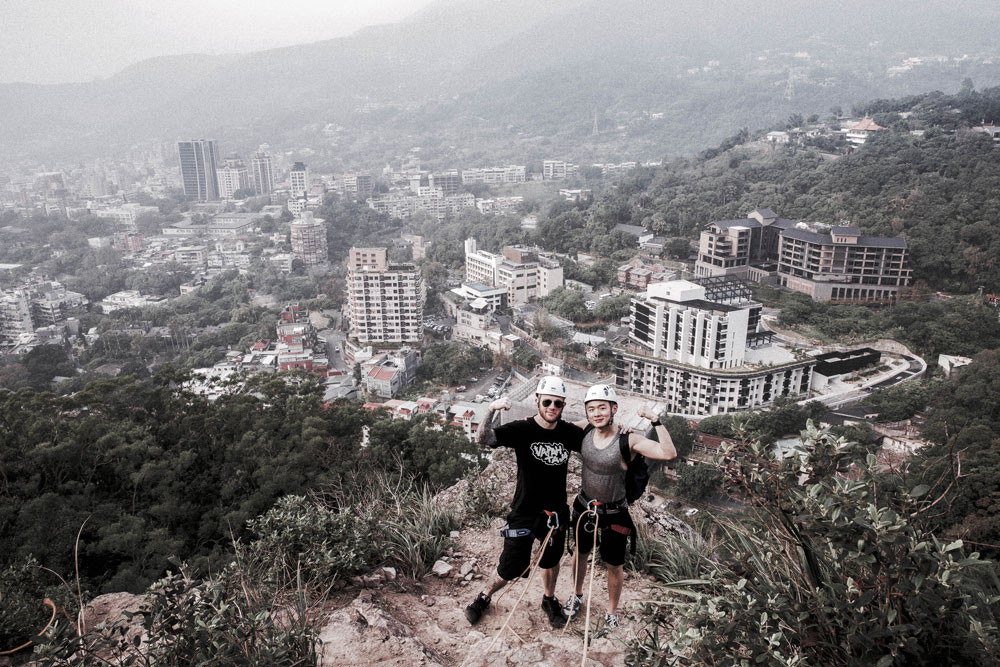
Feeling great after the climb
Note: At least a moderate level of physical fitness is recommended for those who wish to give rock climbing a try. Though it probably goes without saying, pushing and pulling oneself up a rock face is not the easiest thing in the world to do. However, in terms of reward, there are few physical activities that can rival the mix of adrenaline, endorphins, and majestic views.
Also read:
Josh Ellis Photography: Qixing Mountain (七星山)
About the author

Joe Henley
Joe Henley is a Taipei-based freelance writer, journalist, author, and musician. Originally from Saskatoon, Saskatchewan, he moved to Taiwan fresh out of journalism school in 2005. After a seven-year stint as an editor at a Taipei publishing firm, he decided to dedicate himself to freelancing full-time in 2012.








